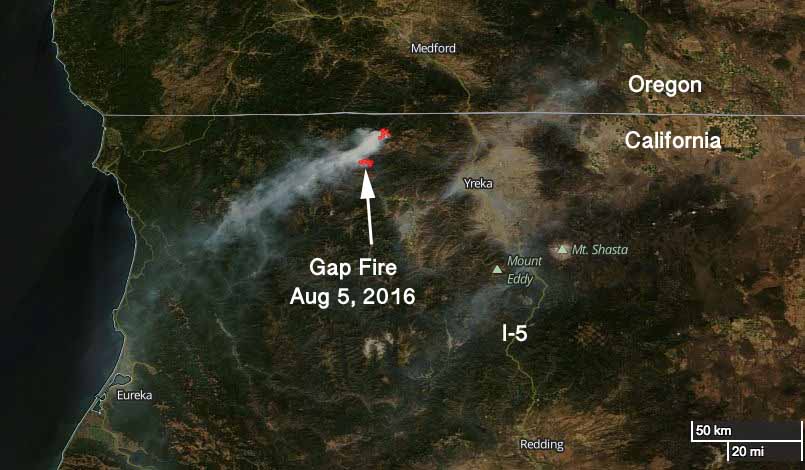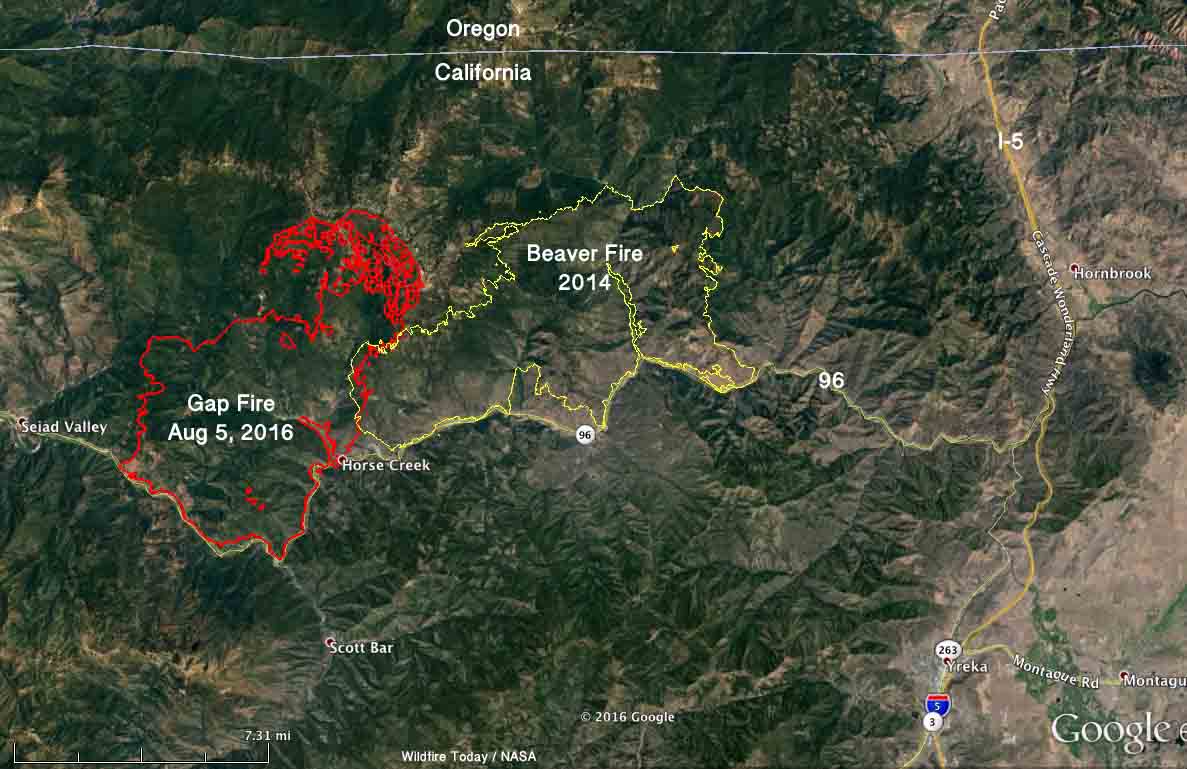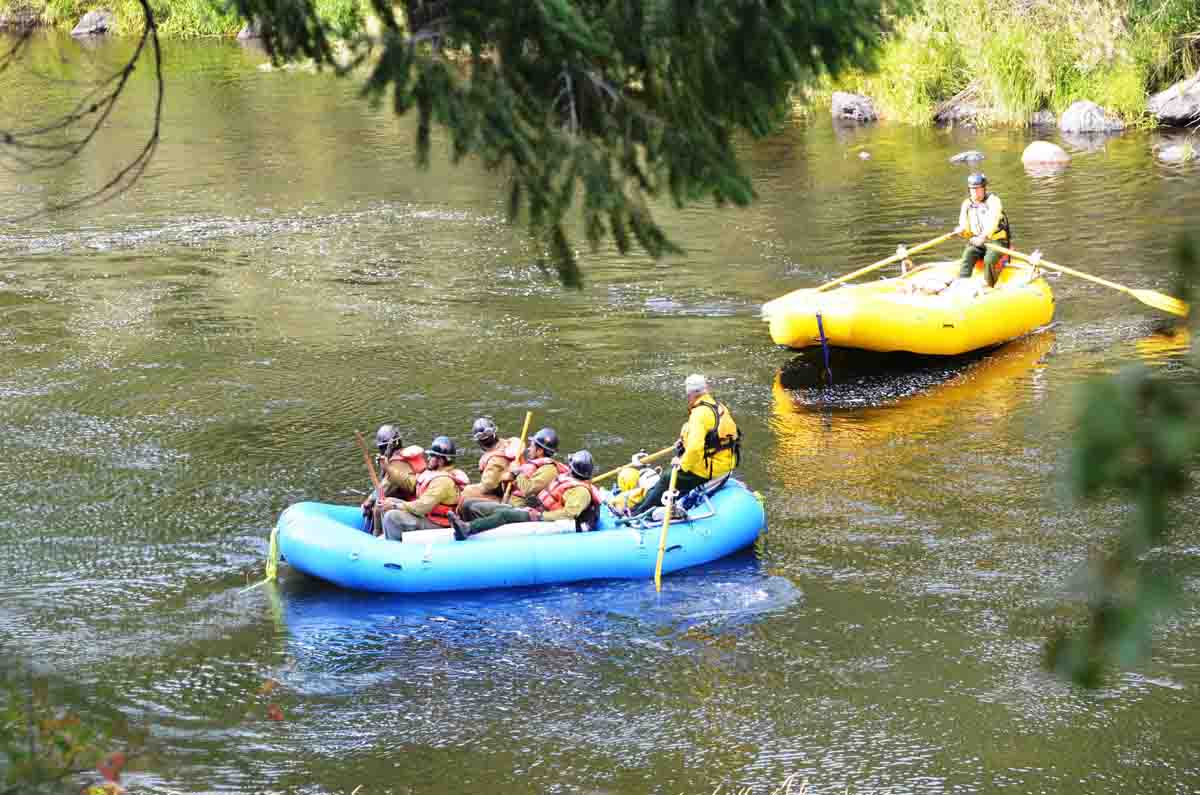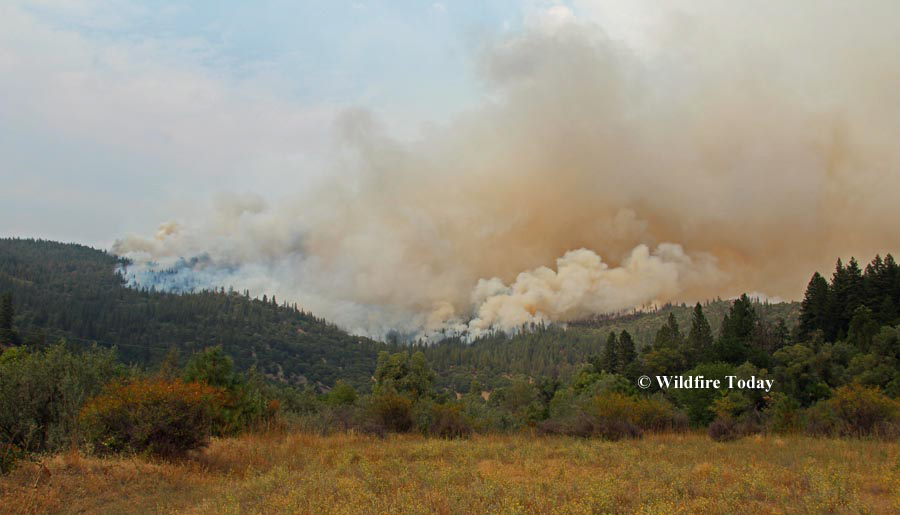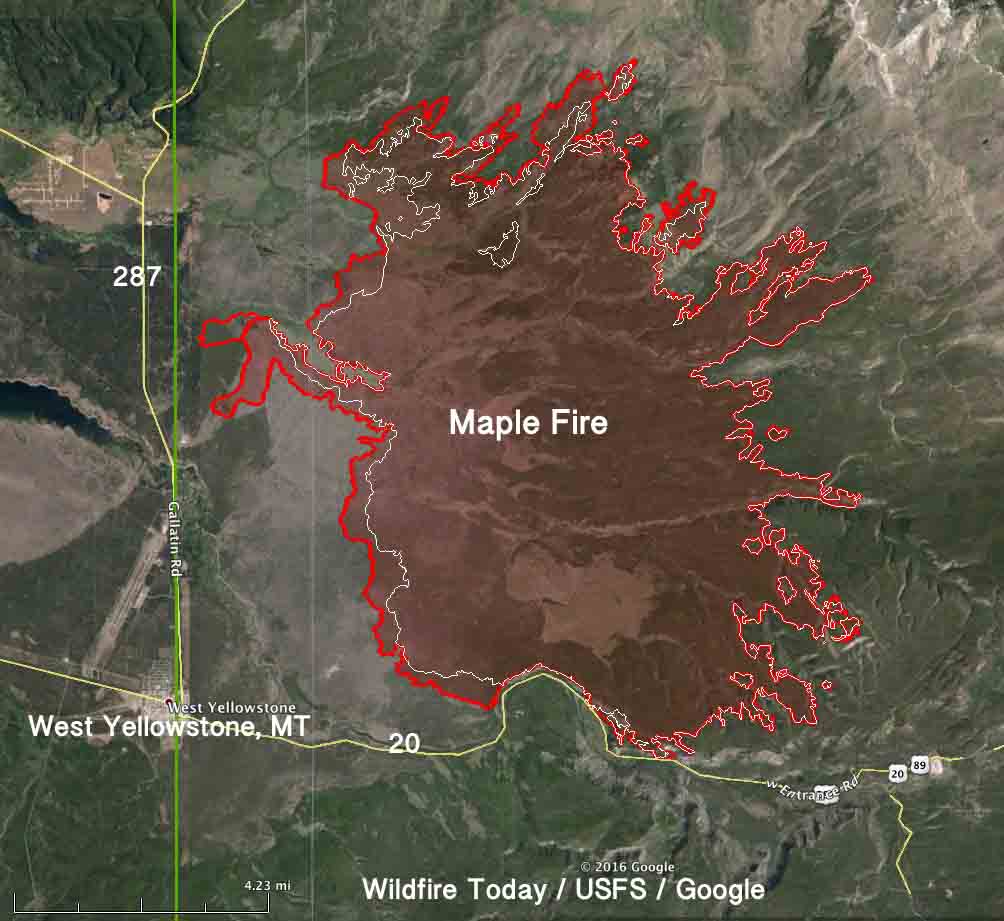At least five very large fires are currently active in the United States:
- Gap in northern California,
- Pioneer in central Idaho,
- Maple in Yellowstone National Park,
- Soberanes on the central coast of California, and,
- Beaver Creek in northern Colorado and southern Wyoming.
Below we have progression maps of these fires (in that order).
We recently found out about a new website that has developed a very impressive mapping service for wildfires. It was the source of these maps. The site not only shows the locations, but in some cases for large fires it displays the perimeters — which can be animated to see the growth or progression of the fire over time. They have this information going back to 2003. It is on the EcoWest website and was created by a collaboration of the Sea to Snow company and the Bill Lance Center for the American West at Stanford University.
The perimeter data is dependent on what is made available by the agencies managing the fire, so there is not always a perimeter for every day.
You can minimize the Description box by clicking the down arrow at the top-right of the box.
(Update Sept. 22, 2020: the data from EcoWest previously posted below is no longer available.)





